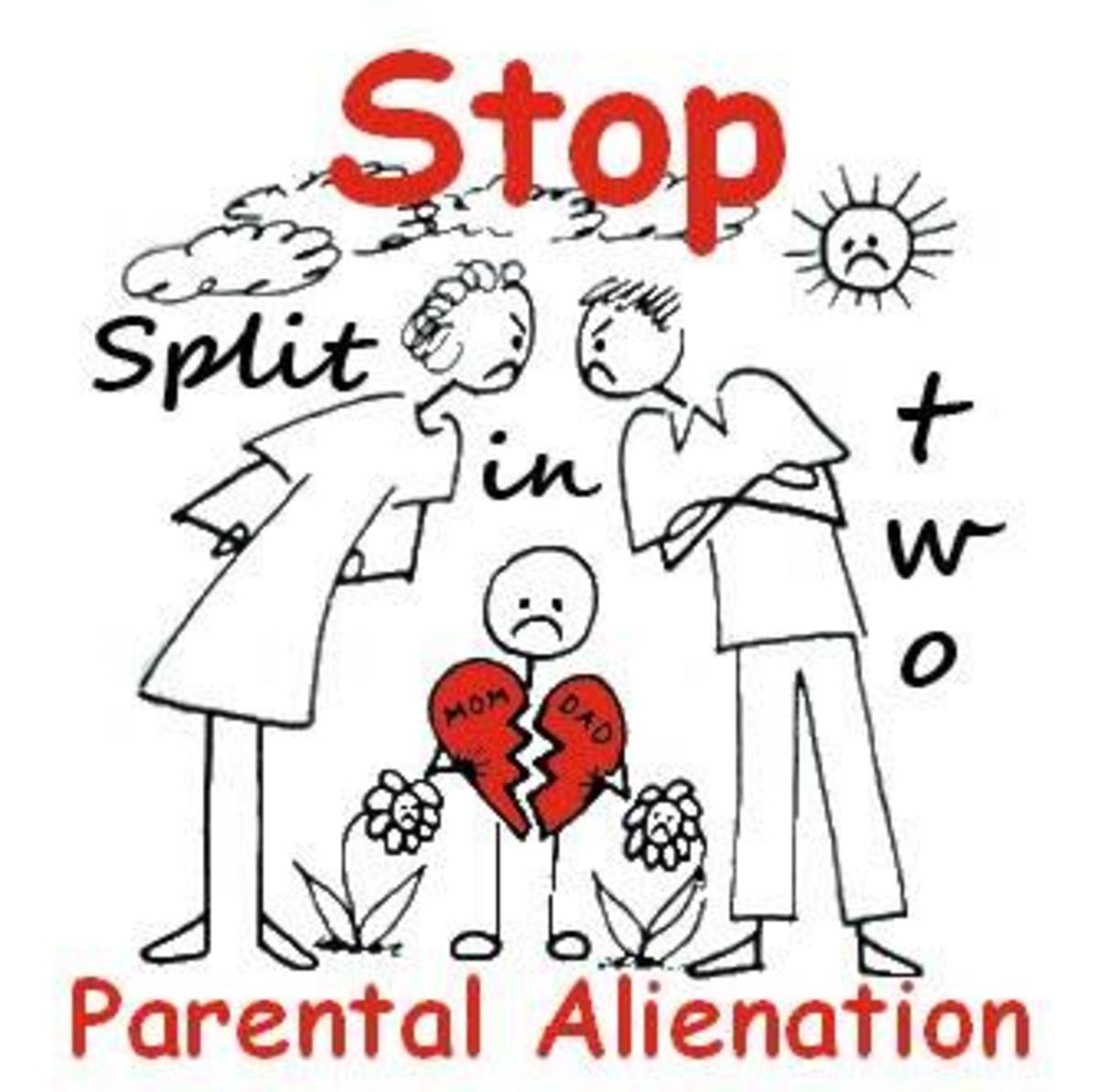The Effect of Divorce on Childhood and Adulthood

Marriage is a one of the most complex institutions human beings can become involved in within their lifespan. According to Merriam-Webster Online Dictionary (2013), marriage is defined as,
“a (1) : the state of being united to a person of the opposite sex as husband or wife in a consensual and contractual relationship recognized by law (2) : the state of being united to a person of the same sex in a relationship like that of a traditional marriage <same-sex marriage>”
However this is just a surface definition and though it is accurate it does not satisfy every individual’s concept or value of marriage. Due to the lack of uniformity when it comes to the concept of marriage (due to differences in religious, legal views, etc) there are many different views on the ending of a marriage, or divorce. According to Merriam-Webster Online Dictionary (2013), divorce is defined as, “the action or an instance of legally dissolving a marriage”. Nevertheless there is opposition to the concept of divorce. Arguments against the legality of divorce are mostly morally or religiously based. In the United States, divorce has not been as liberal a process as it is today. The earliest account of reported divorce in the United States was in Massachusetts Bay Colony in 1629. According to Claudia and Brian Strow (2006),
“Most New England colonies, reacting to Calvinist influence, allowed divorce in situations of desertion or adultery. However, in Massachusetts, a husband's adultery (unlike a wife's adultery) was not a legal basis for divorce” (p. 240)
These stipulations made it nearly impossible for women (or men) to escape from unwanted, abusive or incompatible marriages. According to data collected in the United States over centuries, divorce is a much more common occurrence than it was. Strow (2006) argues that this only seems to be the truth. In reality divorce has always been a part of American society,
“at various times in history, the US Census has appeared to have undercounted the absolute number of divorced persons…for example, that approximately 20 per cent of the divorced population was not counted in the 1950 census and even more were omitted from earlier censuses (e.g. approximately 40 per cent in 1920 and 60 per cent in 1900” (p. 240)
Strow continues on to assert the under numeration is probably due to caretakers, neighbors, or even individuals themselves knowingly (or unknowingly) misreporting marriage statuses. Therefore, divorce is not exclusively a matter of getting worse, but nowadays data on marriage, divorce and remarriage is far more accurate. During the initial liberalization of divorce and with women gaining more opportunities for work and therefore freedom, divorce rates rose. In the early 1900’s,
“the Inter-Church Council convinced President Theodore Roosevelt of possible moral implications of rising divorce, and he subsequently encouraged Congress to gather statistics on marriage and divorce…according to President Roosevelt, there existed ‘widespread conviction that the divorce laws are dangerously lax and indifferently administered in some of the States, resulting in diminishing regard for the sanctity of the marriage relation’” (p. 242)
After this information was gathered it became very apparent that the variety of divorce laws was causing major issues for the United States. Marriage is a matter of states’ rights therefore divorce is as well, so it was virtually impossible for Congress to implement uniform divorce laws. However congress was able to create certain measures in order to reduce the frequency of relocation in order to obtain a divorce. For individuals in western and northern states, divorce was relatively easy to obtain compared to in southern states, which nearly forbade it. At the turn of the century, divorce laws tightened, fewer legal grounds for divorce were accepted and state residence requirements became stricter and more frequently enforced. However, as attitudes of divorce grew more tolerant, liberalization of the divorce process was much more possible. Trends for divorce rates in the United States are due to economic, demographic and legislative changes.
Economic changes can be looked at from a macro (national) and a micro (personal) level. Macro level economic changes include entering or leaving a war, economic depression or recession and unusually high levels of unemployment (especially when affecting the middle class). While it may not seem as if these national economic changes would affect divorce rates, they do. One of the most apparent changes in this category includes a rise in marriage rates when going into a time of war and a rise in divorce rates when coming out of a time of war. Especially in the past, couples would marry hastily before men (and now women) were sent off to war. According to Strow (2006) “time apart frequently contributed to one spouse developing a relationship with someone else… [Additionally] time apart changed some spouses into substantially different people” (p. 242). These are the indirect effects of war on divorce rates in not only the United States, but in other countries worldwide. Micro level economic changes have a much more direct impact on marriage and subsequently divorce rates in the United States. These changes could include the loss of a job, pay cuts, and a variety of tax increases. Financial stress on a family is a notorious reason for divorce. According to Mariana K. Falconier and Norman B. Epstein (2011) “financial strain tends to create marital distress” (p. 303), a statement that proven nearly impossible to refute.
Demographic change refers to a shift in values among different regions as well as a shift in the importance of certain regions in the United States. Southern states have been and seemingly will stay the most conservative region of the country. Coincidentally, the southern region tends to support states’ rights and less federal government involvement. States’ control of marriage created many problems regarding divorce in the past. Nowadays, state’s control of marriage is stirring up the LGBT community in regards to same-sex marriage. The industrial revolution shifted importance in location from farmland to cities. According to Strow (2006), “demographic changes brought about the increased labor force participation of women and female economic independence, which allowed both men and women greater freedom to divorce” (p. 239).
The evolution of the divorce process, addition of new legislation and removal of outdated legislation significantly impacted marriage and divorce. However, divorce law is ever changing and therefore nearly impossible to report in full. It’s also difficult to compile a complete history of divorce law because each of the 50 states has a separate history. However the liberalization of divorce law has made state legislation much more similar. For example, in the 1600s some of the only legal grounds for divorce that were accepted were adultery, death or desertion. Nowadays, nearly any plausible reason for divorce, including unhappiness, is legal grounds for divorce.
Divorce is a social problem because it affects hundreds of thousands of people all over the world, directly and indirectly. According to the United State Census (2009) 2,287,000 males and 2,209,000 females got married, but 1,099,000 males got a divorce and 1,220,000 females got a divorce. Meaning nearly one in every two marriages will end in divorce, and this is the general trend for the United States. However, the frequency of divorce is not the only issue; the frequency of the threat of divorce is even more detrimental.
In their article “Effects of Parental Divorce on Marital Commitment and Confidence” for the Journal of Family Psychology, psychologists Sarah Whitton, Galena Rhoades, Scott Stanley and Howard Markman assert that research on divorce has demonstrated that compared to offspring of non-divorced parents, those of divorced parents generally have more negative attitudes toward marriage. Specifically, adults whose parents divorced typically have less commitment to their own marriages and less confidence in their own ability to maintain a happy marriage. “Weak commitment to the general norm of lifelong marriage may ultimately undermine people’s commitments to particular relationships” (Whitton, Rhoades, Stanley & Howard, 2008, p. 789). In other words, if children are exposed to unstable relationships at a young age, they may consider marriage an impermanent institution. Research of this theory was done in the form of a study in which a sample, of couples to be married for the first time, was questioned about the role of divorce during their childhood. Preliminary results showed no apparent differences between individuals from divorced and nondivorced families “in term of age, length of relationship, income, education level, religiosity or cohabitation status” (Whitton, Rhoades, Stanley & Howard, 2008, p. 790). Further research concluded that
“parental divorce was associated with lower relationship commitment and confidence for women, as hypothesized. For men, however, there were no effects of parental divorce, but parental conflict was linked with lower relationship confidence” (Whitton, Rhoades, Stanley & Howard, 2008, p. 790)
It is extremely difficult to test and/or prove this theory due to individual differences. However, this study did sufficiently assess the potential effects of parental divorce on, specifically, the participants’ commitment and confidence to marriage. Whitton, Rhoades, Stanley and Howard (2005) did admit that
“there are limitations to the present research. Foremost, the sample was not representative. Most participants were White and moderately well educated, and all were married through a religious organization. Findings may not generalize to couples from other ethnic or educational backgrounds or to those who do not marry in a religious organization (although over 75% of U.S. couples do)” (p. 793)
Despite these limitations, this research emphasizes the effect parental divorce can have on marital commitment and confidence is typically negative, particularly for women. The authors (2005) concluded that
“these findings suggest that it may be important for relationship education programs to include specific strategies to help women from divorced families develop higher levels of relationship commitment and confidence by learning skills that promote healthy, happy, and long-lasting marriages” (p. 793).
In her article “Parental Divorce and Child Mental Health Trajectories” for the Journal of Marriage and Family, author Lisa Strohschein reveals that parental divorce affects the social and developmental context of children's lives. This revelation in turn provided better insight into how parental divorce creates vulnerability in some children and resilience in others. Specifically, analyzing a study that involves tracking a nationally representative sample of Canadian children (ages 4-7) and comparing their mental health trajectories to a sample of American children with divorced parents (ages 5-8). While it is quite noted by sociologists that divorce has major mental and emotional effects on any children in the family, Strohschein (2005) reminds that “even before divorce, the lives of children of divorced parents may differ substantially from children of intact families, and it is plausible that these differences, rather than parental divorce, are the source of mental health problems” (1287). She goes on to list other psychological aspects that can damage the family dynamic, such as marital dissatisfaction, parental depression and general family dysfunction which can reflect a parent’s skill and capability to maintain an intact family. Mental health trajectories of “children whose parents later divorce [include] higher levels of anxiety/depression and antisocial behavior than children whose parents remain married” (Strohschein, 2005, 1289). Strohschein concludes that dysfunctional family dynamics, even before divorce or marital disruption, increase the likelihood of mental health problems of children involved.
“A process-oriented approach to the effects of parental divorce on child mental health stands to advance considerably this field of knowledge, by enabling researchers to discern more clearly how child mental health is uniquely affected by child and family characteristics that precede and predict marital dissolution, as well as effects that flow directly from the divorce event and emerging subsequent stressors” (Strohschein, 2005, 1300)
Strohschein (2005) reports there are two limitations specific to this study: (1) “perspectives on family life and child mental health are based on the perceptions of only one parent…leading to more statistically significant associations than actually exist” (p. 1300); (2) “the untested assumption that parents invest all available resources in their children” (p. 1300). Despite this, Strohschein’s study does offer much insight into the lives and potential lives of children affected by divorce.
Samantha Blake is a 19-year-old sophomore at Rowan University. She grew up in New Jersey with one older brother and her parents in Monmouth County. Her parents are to this day married, but that does not mean that they did not experience troubles along the way. She was interviewed as a part of this sociological study, below is a summary of the questions asked and her responses.
When asked about marriage, Samantha defined it as, “when two people love each other, they want to spend the rest of their lives together and never want to be apart from. Marriage is very important. When I get married, I am getting married for life. Divorce is not an option for me.” Which led into her definition and opinion on divorce: “Divorce is when a marriage fails. Sometimes a divorce is what is best for the couple because they were not meant to be married in the first place. I do not want to get divorced, ever. I do believe that the people I know have gotten divorced did for the right reasons.” Despite her personal argument against getting divorce, Samantha does agree that divorce should be a legal institution because if marriage is a legal institution then the dissolving of an unhappy or unwanted marriage should be too.
When asked to explain her parents’ relationship, she reported that they have been married for 28 years and the majority of it has been happy, but like any marriage there were obstacles. During her childhood, her parents did have low points in which divorce was an imminent threat. When asked what the causes of said threats are, Samantha admitted she was the reason. Financial strain on marriage is a common cause of marital distress and children are needy, as all parents know. For 18 years, children are financially dependent on their parents and the more children there are in a family, the less money there is for everyone in the family. According to Frank Sulloway (2001), “youngest children as spoiled and lazy” (p. 45), adding not only the financial strain of another dependant, but also stress related to the youngest child’s typically unruly behavior. In other words Samantha did not intentionally cause problems between her parents; they were more natural than that. Despite these obstacles Samantha’s parents did remain married. Though she did witness other children that were affected negatively by parental divorce, there are positive aspects to the divorce. The most common being the parents are better off apart than together.
Samantha has never been married, so she was asked a set of theoretical questions regarding the functionality of marriage. In her opinion, three aspects necessary for a healthy marriage are (1) communication; (2) love; and (3) trust. As stated earlier she does not believe in divorce personally. However she admits that in certain circumstances divorce is the best option available. These are her closing remarks regarding her interview:
“I think that people who do not love each other get divorces all the time. These people know that their relationship has failed and that staying together will never make any problems better. Divorce is not harmful to society because people should be allowed to make their own choices, and if divorce is their choice no one should stop them. If it were me, I would rather be happily divorced, than miserably married.”
William Coughlin is a 49-year-old divorcee from Middlesex County. He grew up with three older sisters and parents, until his father died of a heart attack when he was 17-years-old. After graduating high school he began his career in the Heat, Ventilation and Air Conditioning (HVAC) trade, a career he’s pursued to this day. He was interviewed as a part of this sociological study, below is a summary of the questions asked and his responses.
When asked about marriage, William defined it as, “the end result of two people who love each other and it is very important to me.” When asked about divorce, William defined it as, “Divorce is the end result of two people who used to get along and no longer can and after going through it myself, I can certainly say it is no fun at all.” After going through the grueling divorce process, William still agrees that it should be a legal institution because divorce is a way out of a legally binding contract between two people that no longer want to be responsible for each other anymore.
When growing up, William’s parents were married until the death of his father. While married divorce was never an imminent threat within the household, though there was obvious marital conflict from time to time. He believes this is due to the difference in values his parents had in the 50s, 60s and 70s. In the past, marriage was a much more sacred institution, whereas today it has lost a lot of values to many Americans.
In his opinion, three aspects necessary for a happy and healthy marriage are (1) trust; (2) chemistry; and (3) lifelong commitment. The responsibilities he took on within his marriage were providing for his family, raising his two daughters and being a role model.
In December 1991, William married Joyce Cappaze. Joyce was born an only child born in Charleston, South Carolina to 18-year-old Faye Heirs and was abandoned by her biological father at the age of two. A few years later her mother married Anthony Cappaze and the two have been married since. In 1993 William and Joyce had their first daughter and in 1996 they had their second. 10 years after getting married William and Joyce separated within the home they owned in Middlesex. William occupied the master bedroom on the second floor while Joyce occupied the walk-up attic. The separation lasted 3 years because financial troubles prevented them from being able to afford a divorce. In July 2004, one year after filing for divorce in the state of New Jersey, William and Joyce finalized their divorce. Both daughters went to live with Faye, Anthony and Joyce in Essex County because the school system was much better. William received partial custody and full visitation because the divorce was not particularly aggressive, more so an agreement.
Both William and Joyce have moved on since the divorce. Joyce has being happily engaged for seven years and William has been on an off dating. However, both have accepted and moved past their divorce.
Divorce is an unfortunate but helpful institution in the United States and around the world. It dissolves unwanted marriages and helps individuals move on from dark times. Not all divorces are completely warranted, but neither are all marriages. Tolerant attitudes concerning divorce in the United States have most definitely played a part in the liberalization of the divorce process and the decrease in marital value.
The sociological studies reviewed in this report theorize two major results of divorce: (1) Whitton, Rhoades, Stanley and Markman concluded that the effects of parental divorce on marital commitment and confidence are obvious. Women whose parents are divorced are typically affected in both areas while men are typically only affected by parental conflict in terms of confidence; (2) Strohschein concluded that parental divorce has negative effects on child mental health trajectories. Children of divorced parents may develop social disorders and/or anxieties depending on the nature of the divorce.
The interviews conducted for this report led to the conclusion, while no one would ever be completely for divorce (as if everyone should get one) it is a useful institution. Samantha, never being married, is hopeful and determined that her first marriage will be her last. William, being married and divorced, has moved past this divorce and is in search of his new life.
Divorce may be the end of a marriage, but it is also a fresh start. No one should have to suffer within a marriage that is not right for them. However, divorce is a social problem in the United States because one in two marriages ultimately ends in divorce. Maybe the problem is not the amount of divorces, but the amount of couples that go into a marriage blind and end up way over their heads.
References
Falconier, M. K., & Epstein, N. B. (2011). Couples experiencing financial strain: What we know and what we can do. Family Relations: Interdisciplinary Journal of Applied Studies, 60(3), 303-317. http://dx.doi.org/10.1111/j.1741-3729.2011.00650.x
Merriam-Webster Incorporated. (2013). Marriage. In Merriam-Webster online dictionary. Springfield, Ma.
Merriam-Webster Incorporated. (2013). Divorce. In Merriam-Webster online dictionary. Springfield, Ma.
Strohschein, L. (2005). Parental divorce and child mental health trajectories. Journal of Marriage and Family, 67(5), 1286-1300.
Strow, C., & Strow, B. (2006). A history of divorce and remarriage in the United States. Humanimics, 22(4), 239-257.
Sulloway, F. J. (2001). Birth order, sibling competition, and human behavior [Chapter]. In F. J. Sulloway (Author), Conceptual challenges in evolutionary psychology: Innovative research strategies (pp. 39-83). Boston, Ma: Kluwer Academic.
U.S. Census Bureau, Births, Deaths, Marriages, and Divorces, Doc., at 97 (2012).
Whitton, S. W., Rhoades, G. K., Stanley, S. M., & Markman, H. J. (2008). Effects of parental divorce on marital commitment and confidence. Journal of Family Psychology, 22(5), 789-793.








